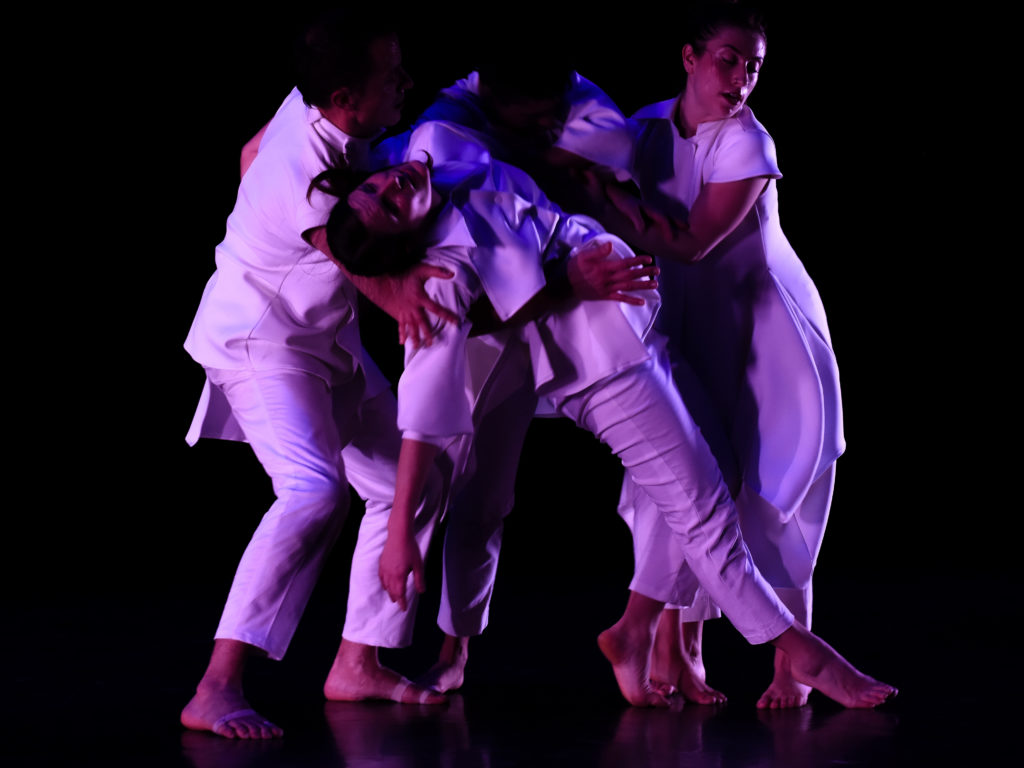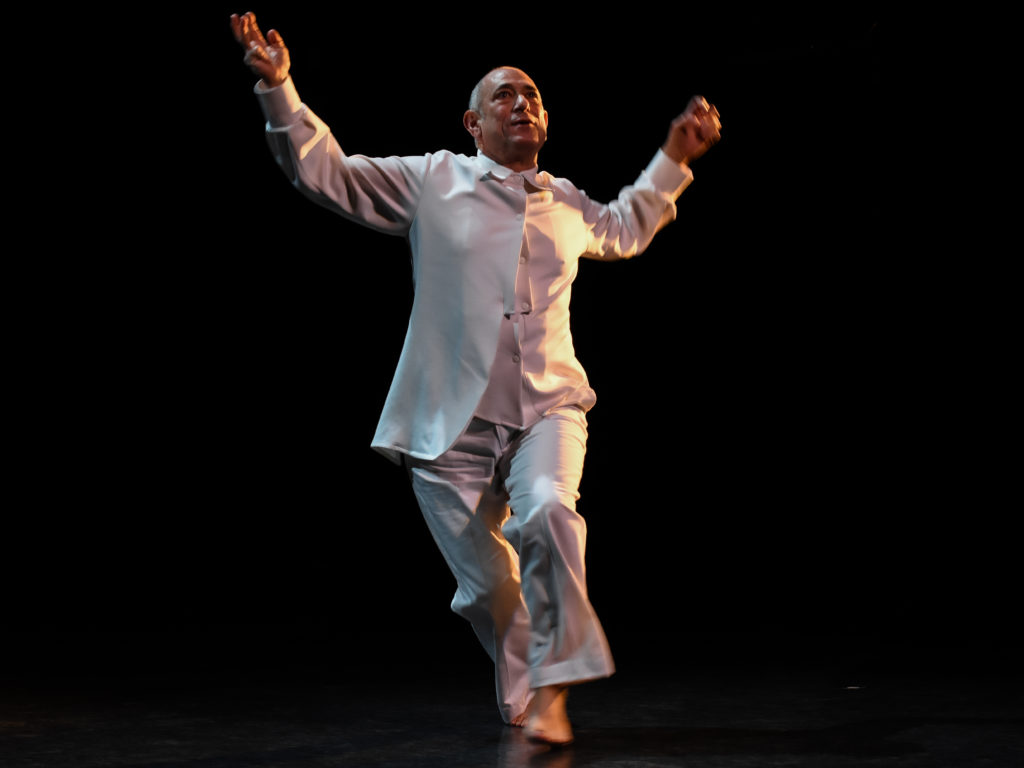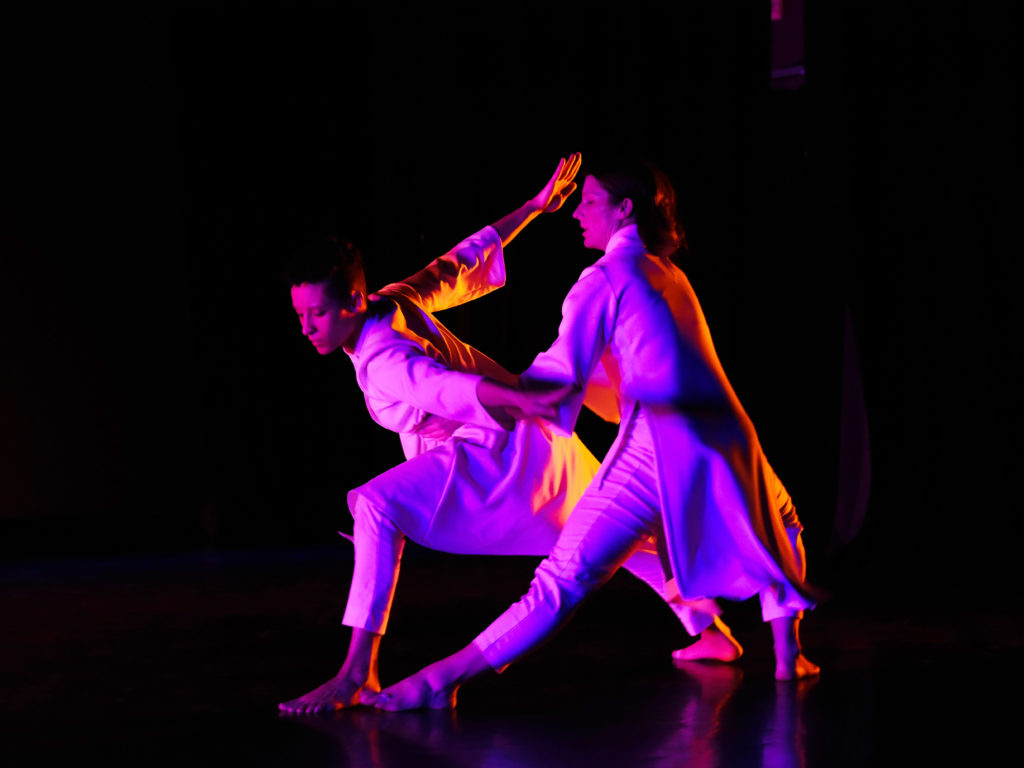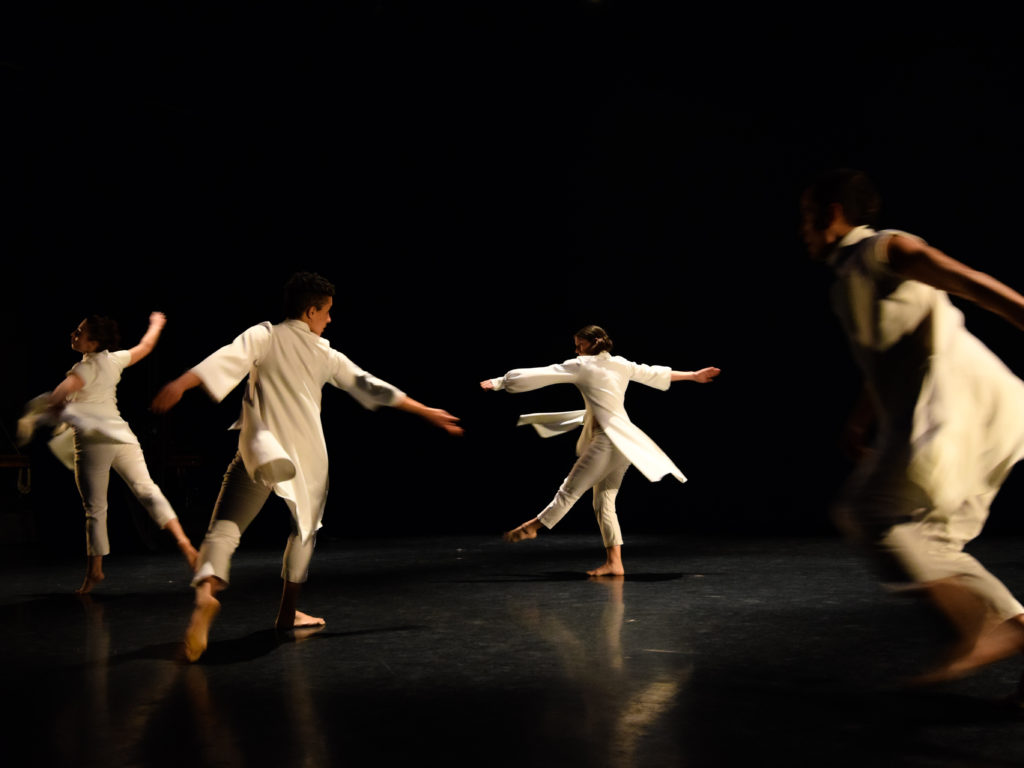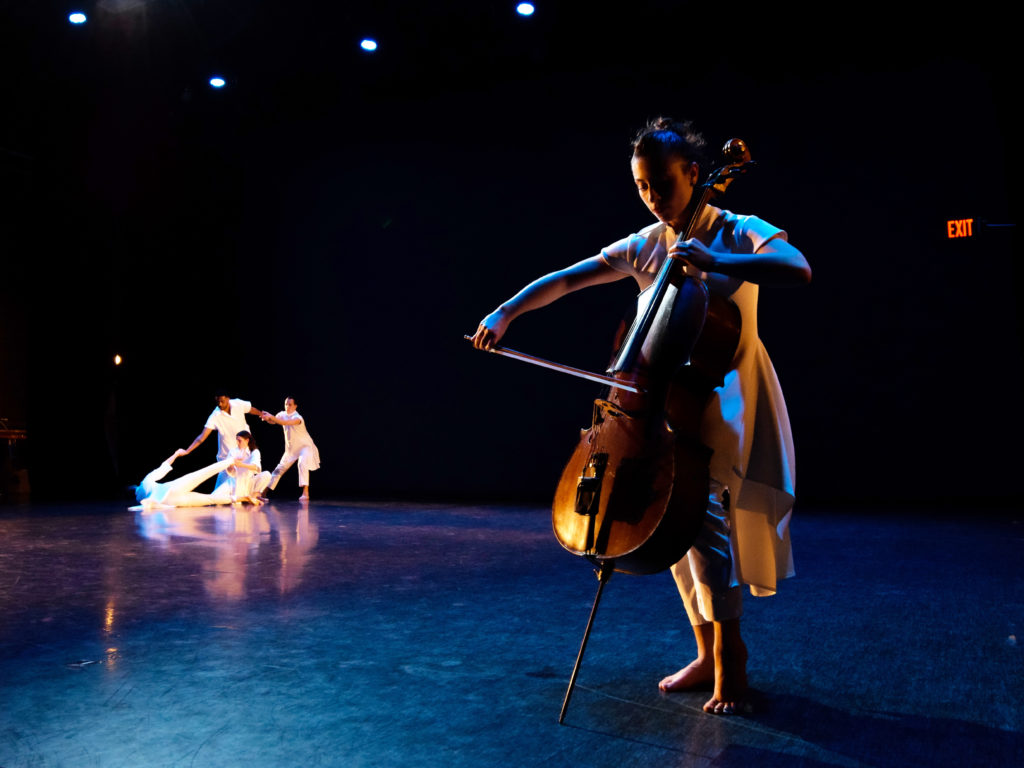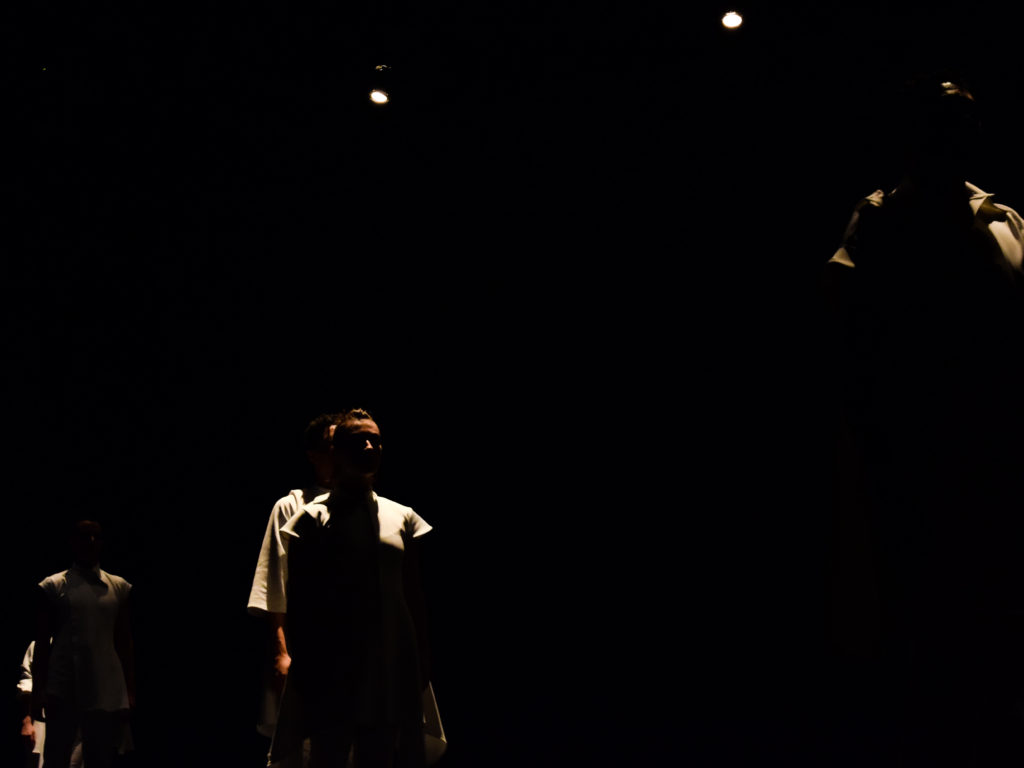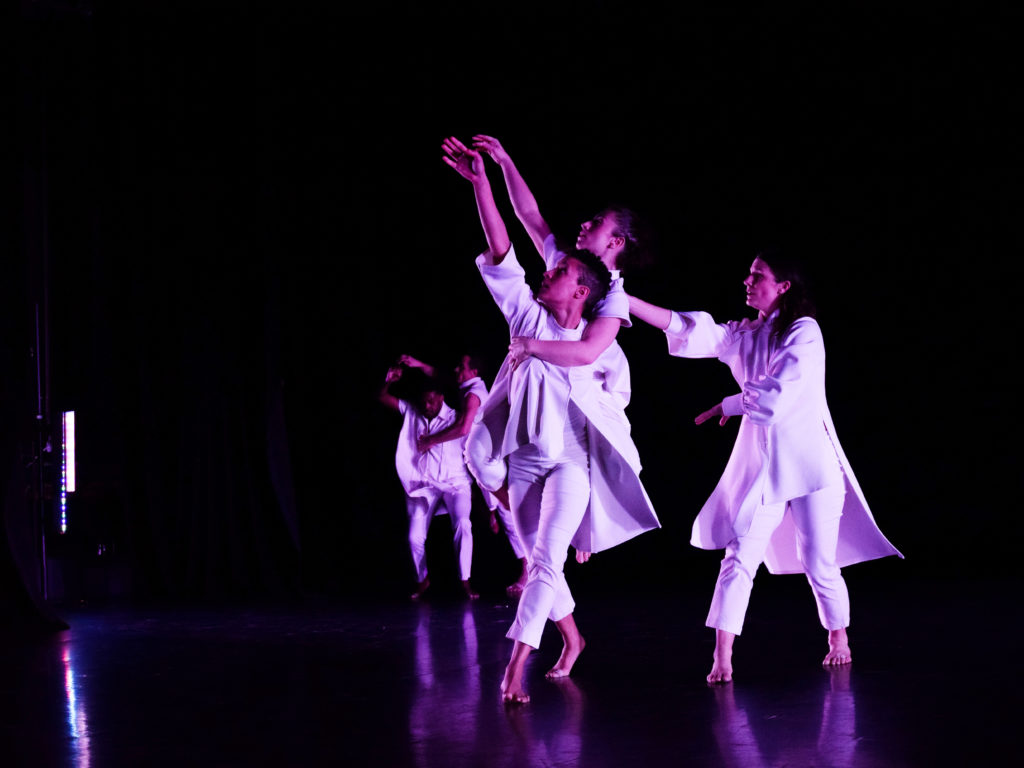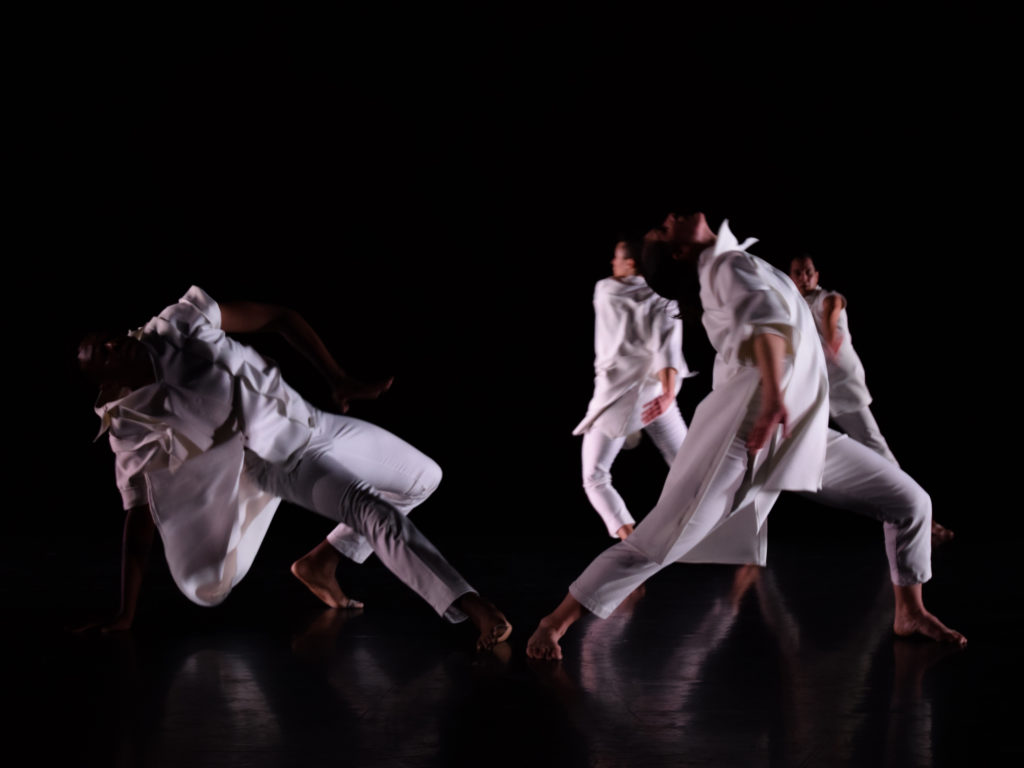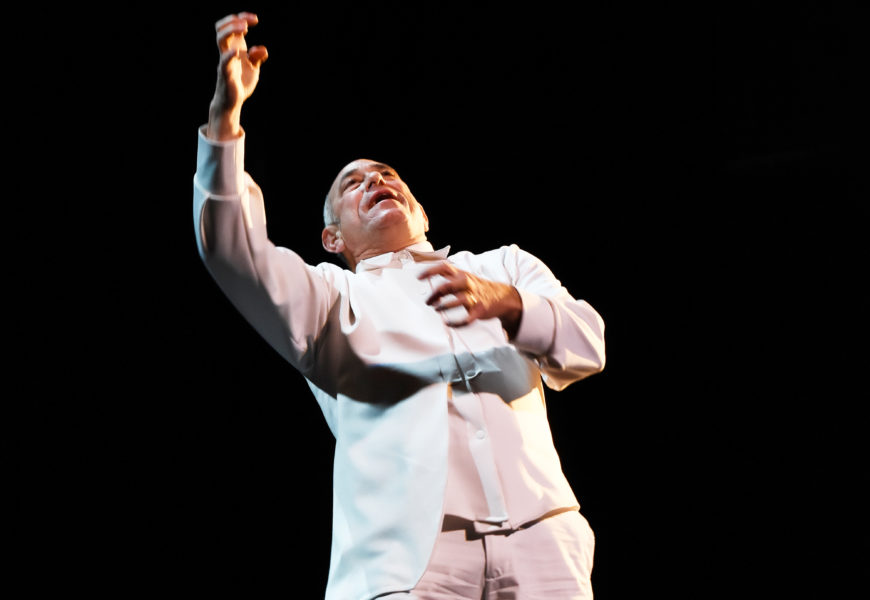Myers Studio welcomed the public into its dimly lit, intimate performance space on the weekend of February 7th for the premiere of David Dorfman Dance Company’s “A(way) Out of My Body.” With nothing but a faint blue rectangle to greet the audience, the dancers took to the stage in darkness, accompanied by instrumentals that evolved into the soothing yet despondent vocals of Liz de Lise.
Once illuminated, the dancers shone like orbs of light in their striking white costumes, swirling about the stage as they oscillated between sharing movements and breaking away into individual phrases. This bound form of collective flow filled the space with countless moments of finding and losing impetus, as if the dancers were simultaneously searching for and desperately holding onto their passions.
With the run-time resting at just under one hour, the performance took on a dual sentiment of conclusion and open-endedness. The tsunami of thoughts, actions, and emotions that reached the audience began to find stillness, but its effects lingered as the performers made their exit and the audience dissipated.
In an interview, David Dorfman emphasized the intensely collaborative nature of this performance, and of the members of the company in general. “I make the initial phrases, but they all constructed their own partnering, their own solos, based on what the original phrases are.” He strives to bring the dancers together by accentuating how different they are, and accepting those differences to a point where they almost become a similarity. This connection across difference was one of the main inspirations for “A(way) Out of My Body.”
Dorfman wanted this performance to be a bit more terse, as if they were holding onto each other and their reality. Throughout the piece, it is as if the dancers need to be one body, bound together in their flow through body-on-body partnering and formations. Dorfman elaborated on his vision to this effect: hypothetically, if we (society) were one body, would we be hurting each other as much as we are in the world today? Considering the intense sense of the “other” that we have today, how can we subvert that? How can we honor ourselves? What does it feel like when you’re not as connected to your body? Is this an out of body experience? To address these questions, the piece turned to various experiences of trauma and the task of helping one another through dance to discover that movement exists beyond pain.
“We don’t want them to just be dancing around. There needs to be a direction,” said Dorfman. “Arrange it, arrange it, rearrange it until it has a resonance.” This is a hugely collaborative project: a living, evolving thing that works to connect the dancers to the audience. Engagement with the audience is a mutually beneficial element because it makes dance accessible to everyone. “I like to sometimes go towards an obvious effect or motion, so that someone who’s coming into the theatre, they don’t need to be a dance aficionado,” expressed Dorfman, who noted that on Saturday the 8th there were 148 people in the audience, and 148 different versions of the dance. “And they are all superbly yours.” He encourages people to own what they saw. With some experimental dance styles, many viewers feel like they don’t know enough, or that they might be wrong about their takeaways. His dancing seeks to honor and validate the individual experiences of the audience, encouraging them to own what they saw.
After two years in the making, David Dorfman Dance will continue to perform “A(way) Out of My Body.” Dorfman is looking forward to working on it further while it is in this state of flux, close to finding its final form. •
Above: David Dorfman. Photos courtesy of Lauren Cress.
